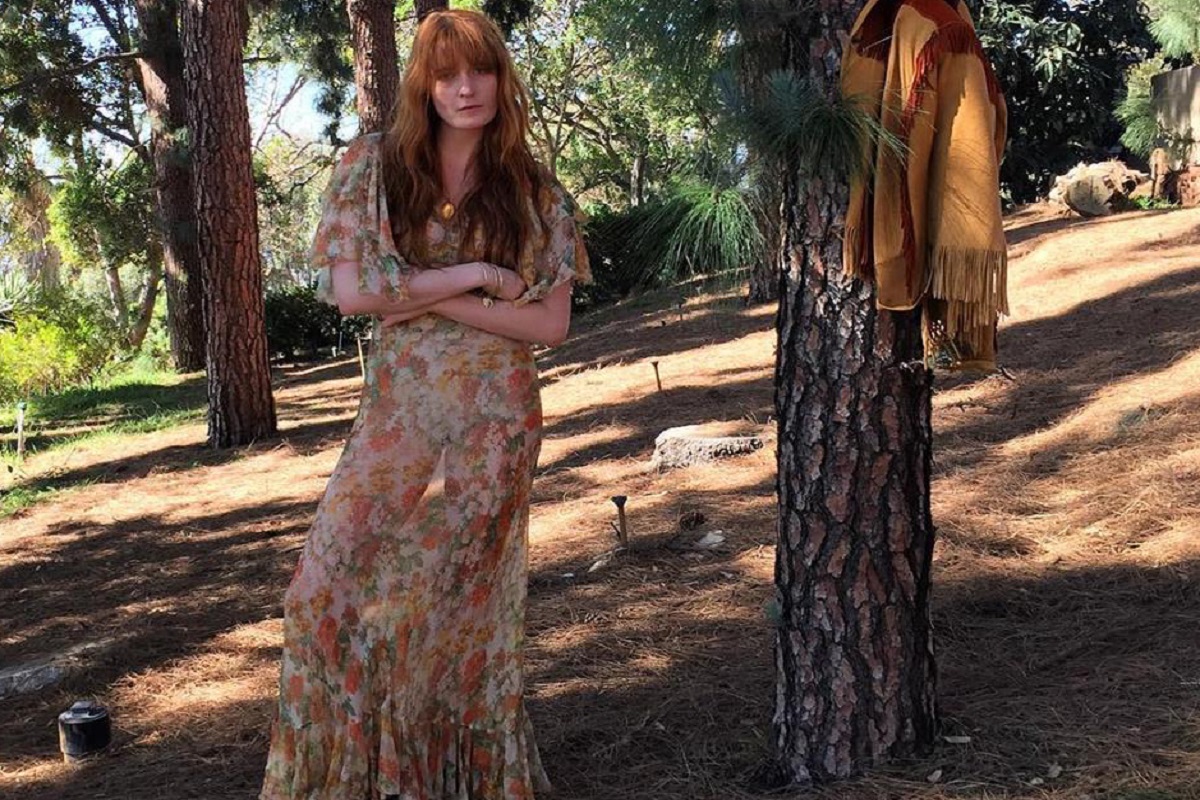
Florence Welch (Credit: Artists Facebook page)
As more lyrics books hit the shelves, Getintothis’ Cath Bore looks at how some artists are freshening up the genre.
Whether painstakingly written down, lyrics deciphered word for word or read from an album insert, there’s a lust to learn the message behind the songs we love.
While the internet has seen off traditional ways of finding out lyrics, Smash Hits and pop magazines with songs printed inside now gone, there’s a glut of free sites offering scarily up to date lists of chart hits. Younger pop fans are well served, new releases online pretty sharpish, and delivered quicker to them than a fanzine ever could manage. The lyrics to Blossoms’ new single I Can’t Stand It were online last week to synch in with its premiere play on Radio One.
Knowledge about lyrics and the meanings behind them, searching out secret subtexts, working out metaphors within lyrical wordplay, is a huge part of fandom and music consumption.
That, and let’s not to forget the one upmanship and clever dickery that goes with knowing something other people don’t.
There’s pleasure in being an active participant. It makes a song everlasting, not fixed, a living and breathing thing, more important and precious.
The very finest songs and recordings are those which connect the performer to the listener. Lyrical content and meaning builds up that intimacy. And we always want to know more.
Contemporary print music magazines are dying, but there’s a gap in the market still for a permanent, tangible product, one linking the creator with the consumer. Lyric books, specifically, books curated by the songwriter and artist themselves, fill that gap. And they’re shifting to fit what the changing market wants.
There’s always been chord and song book of course. But lyric books are different. We’ve had a flurry of them in the last few years, publisher Faber is leading the resurgence in its Selected Lyrics series, after Jarvis Cocker became editor-at-large in 2011.
Some songwriters, like Cocker and Billy Bragg, explain themselves in their books at length, but others – Van Morrison, Bob Dylan – let the songs do the talking. So to speak.
Faber Social’s creative director Lee Brackstone explained to The Guardian, “People want to feel a more intimate connection with artists; these are collectors and superfans. There’s an authority that comes with these volumes and people want stuff on their bookshelves from artists they love.”
Mysticism, otherness & traumatic echoes: the best of Eastern European cinema
Hardback books survived the ebooks invasion seven or eight years ago largely because they look impressive, classy. Hardbacks have a veneer of sophistication and respectability. Modern lyric books are made for the format.
But we can safely slot most in the coffee table book category. Lyric books, one suspects, are flicked through but largely left unread. Great for bragging rights, prominently displayed or arranged on the bookshelf so visitors can see.
Liverpool-born writer and Bailey’s Women’s Prize for Fiction 2014 winner Eimar McBride was commissioned by Scott Walker to write the introductory essay in Sundog, his lyric book published in January. In it, she talks about the practice of referring to lyrics as poetry, of labelling songwriters poets, in an effort to increase respectability and elevate them into a higher art.
It’s this premise makes lyric books attractive. We’re told poetry is making a resurgence, and although that’s true to an extent – over 10 million engaged with the BBC #freetheword hashtag as part of National Poetry Day in 2017, there’s been a 50% increase in poetry book sales over the past four years, plus poetry slams are very popular – there’s still more people who write poetry than read it, let alone pay money for it.
Lyric books have a higher glamour than poetry pamphlets, but carry the same perceived intellectual rigour.
And everyone knows the songs.
Or do they?
Those expecting Sundog to be a volume of 1960s Walker-esque tragic romance were left bitterly disappointed; there are a mere five songs in all from that decade in the book, the rest are his newer, more dissonant works.
Those of us who suspected Duchess from his 1969 Scott 4 album would be perfect if it only had reference to the female orgasm in it have had our patience rewarded, Sundog revealing, almost 50 years later, the original lyric contained exactly that.
Furthermore, the book carries six new unheard songs, written in 2016 and 2017..

Useless Magic by Florence Welch
In 2013 Florence Welch of Florence and the Machine launched her Instagram book club, Between Two Books, where she recommends reads to almost 90,000 followers. This could prove a canny marketing move; this July, Penguin Books imprint Fig Tree publishes Welch‘s lyric book.
But one with a further twist.
Useless Magic will contain song lyrics and Welch‘s own poetry, the latter never before published. The volume is illustrated by sketches from the author. It will be a full colour hardback.
The motivation behind Useless Magic is, she revealed upon announcing the book, “Songs can be incredibly prophetic, like subconscious warnings or messages to myself, but I often don’t know what I’m trying to say till years later. Or a prediction comes true and I couldn’t do anything to stop it, so it seems like a kind of useless magic.”
The way an artist approaches their lyric book and constructs it, can transform it into a creative work in itself, and rescue the tome from being a mere exercise in nostalgia. Doing something different with the lyric book format makes it a far more interesting and enticing proposition.
With other notable names such as Shaun Ryder and Wilco‘s Jeff Tweedy preparing to launch their own books, it will be of interest if they and others also experiment with the form.
[paypal-donation]
